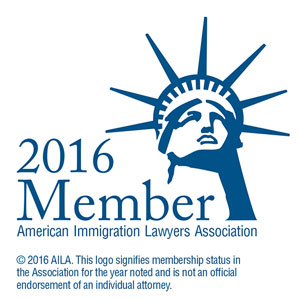The Guide for the Perplexed – Who is Stuck in the Green Card Backlogs
“In the realm of Nature there is nothing purposeless, trivial, or unnecessary” ― Maimonides, The Guide for the Perplexed
David Bier of the Cato Institute in No One Knows How Long Legal Immigrants Will Have To Wait calculates that there are “somewhere between 230,000 and 2 million workers in the India EB-2 and EB-3 backlogs, so they’ll be waiting somewhere between half a century and three and a half centuries. It is entirely possible that many of these workers will be dead before they receive their green cards.” This is stunning, and a damming indictment of the broken and shambolic legal immigration system of the United States.
The backlogs in the India and China employment-based second (EB-2) and employment-based third (EB-3) preferences have made the employment-based immigration system completely unviable. It makes no sense for an employer to test the US labor market, obtain labor certification and classify the foreign national employee in the EB-2 and EB-3 through an approved I-140 petition, and then wait endlessly for decades for the green card. It is also hopelessly frustrating for the foreign national to be waiting endlessly. As Bier’s report points out, the wait may absurdly be beyond the lifetime of the employee and the sponsoring entity. One is also penalized based on where you were born. Although each employment-based preference has a limited supply of green cards each year set by law, the backlog is further compounded due to the per country limit. A person born in India or China, no matter what his or her present nationality may be, is charged to the country of birth. Currently, India and China are more oversubscribed than other countries in the EB-2 and EB-3 backlogs. Therefore, as espoused in The Tyranny of Priority Dates, one born in India or China suffers a worse faith than a person born in Sweden or Ghana in the employment-based backlogs, and this is tantamount to invidious discrimination.
Hence, the burning question in the mind of a perplexed foreign national stuck in the EB-2 or EB-3 backlog who was born in India and China is how can I improve my situation and get the green card more quickly? This blog will offer some guidance.
Upgrade from EB-3 to EB-2
Can you upgrade from EB-3 to EB-2? If so, your employer will have to sponsor you for a position that requires an advanced degree or a bachelor’s degree plus five years of post-baccalaureate experience. There may be circumstances where you may have been promoted or up for a promotion, and the new position may justify an advanced degree, and this may be a good opportunity to once again be sponsored for a green card under the EB-2 if you were originally sponsored under EB-3. Alternatively, a new employer can sponsor you under EB-2. If the labor certification is approved for the new position, along with the I-140 petition, the priority date from the EB-3 I-140 petition can potentially be captured for the new EB-2. You will be able to advance closer to the green card in the new EB-2 queue through this upgrade, and may also be current to receive a green card. For example, if your priority date on the EB-3 petition was November 1, 2007, and if you recaptured it for the new EB-2 petition, then you will be current, as the EB-2 India Final Action cutoff date is November 1, 2007 according to the November 2016 Visa Bulletin. The difference between a Filing Date and Final Action Date is explained below.
Not everyone can qualify for an upgrade. If you do not have the equivalent of a US Master’s degree, or the equivalent of a single source 4 year US bachelor’s degree plus 5 years of progressive experience following such a bachelor’s degree, you will likely not be eligible to qualify under the EB-2. Also, be careful about preserving the age of your child under the Child Status Protection Act, as an EB-3 to EB-2 boost may not always protect the child’s age.
Qualifying as a Person of Extraordinary Ability under EB-1A
Some may be able to qualify as a person of extraordinary ability under the employment-based first preference (EB-1A), which is current for India and China. Of course, the standard to qualify under EB-1 is extremely difficult, but it does not hurt for one to at least think about it if you readily meet three out of the ten criteria for demonstrating extraordinary ability. You may have received more acclaim over the years in your career while waiting in the backlogs without knowing it, even if you may not have won major awards or written books or published scholarly articles. For example, in business fields, people have qualified if they have made outstanding contributions of major significance to the field, worked in a leading or critical capacity for organizations with a distinguished reputation and commanded a salary higher than others in the same positions. Even if you meet 3 out of the 10 criteria, the USCIS can still subjectively determine whether you are indeed a person of extraordinary ability with sustained national or international acclaim. Thus, the USCIS can still deny an EB-1A petition even if you meet the three criteria.
Qualifying as an Outstanding Professor or Researcher under EB-1B
If you get a position in a university that is tenure track or comparable to a tenure track position, and you can demonstrate that you are an internationally recognized professor or researcher, you may be able to qualify under EB-1B, which is also current for India and China. In addition, you will need to have at least 3 years of experience in an academic area. Demonstrating yourself as an outstanding professor or researcher is slightly less demanding than demonstrating extraordinary ability as you need to meet two out of six criteria. Interestingly, one can also qualify as an outstanding researcher through a private employer if it employs at least 3 full time researchers and has achieved as an organization, or through a department or division, documented accomplishments in an academic field. Still, like with the EB-1A person of extraordinary category, the USCIS can make a negative subjective determination even after you have met two out of the six criteria in an EB-1B petition.
Qualifying as a Multinational Executive or Manger under EB-1C
Yet another option is to explore whether your employer can assign you to a foreign parent, subsidiary, branch or affiliate as an executive or manager. After fulfilling a year of qualifying employment at the overseas entity, you may be able to qualify for a green card as an intracompany transferee executive or manager under the employment-based first preference (EB-1C) if you take up a similar position with the employer in the US. The EB-1 for multinational managers and executives is also current as it is for persons of extraordinary ability.
Job Creation Investment under EB-5
For those who may have a high net worth, and have amassed over $500,000, can consider passively investing in a project within a Regional Center under the employment-based fifth preference (EB-5). Although the EB-5 is not current for China, it is current for India. Still, the EB-5 requires you to put your capital at risk, and there is always a possibility that you could lose your investment along with not being able to obtain the green card. There is also a possibility of the law changing retroactively after December 9, 2016.
Cross Chargeability through Marriage
While marrying a U.S. citizen may be the panacea to your problems, provided the marriage was in good faith, even marrying a foreign national not born in India or China would allow you to cross charge to the spouse’s country of birth, which may not be experiencing the same backlogs in the EB-3, or may be current under the EB-2.
Filing I-485 Application Under the Filing Date in Visa Bulletin
There is a small saving grace that you can use the Filing Date in the Visa Bulletin to file an I-485 adjustment of status application. Under the November 2016 Visa Bulletin, an EB-2 beneficiary, for example, can file an I-485 application for adjustment of status if his or her priority date is on or before April 22, 2009 if born in India and March 1, 2013 if born in China. While the Filing Date only allows the applicant to file, it is the Final Action date that determines whether the applicant will be granted permanent residence. Note that under the new visa bulletin system introduced since October 2015 that created the dual Filing Date and Final Action Date, the USCIS will determine whether the filing date is applicable each month for purposes of filing adjustment of status applications. In the event that the USCIS determines that the filing date is not applicable, applicants will need to rely on the final action date in order to file an adjustment of status application within the US. In November 2016, the USCIS has allowed filing I-485 applications under the Filing Date as it did in October 2016. Thus, while the Filing Date for India EB-2 is April 22, 2009, which allows for the filing of the I-485 application, the Final Action Date is November 1, 2007, which is when the green card is actually issued. Upon the filing of an I-485 application, the applicant can enjoy some of the benefits of an I-485 application such as job portability, travel permission, and open market work authorization as well as work authorization for derivative family members.
Conclusion – Continue to Advocate for Immigration Reform
While no means exhaustive, these are a few options worthy of further exploration. In the end, notwithstanding available options, you may still not qualify and be forced to remain in the EB-2 or EB-3 backlogs. Still, do not accept your fate and actively advocate for immigration reform in Congress. The Fairness for High Skilled Immigration Act, HR 213, eliminates the per country limits in the employment-based preferences and doubles the limit to 15 % to family sponsored immigrants. The bill has amassed about 127 co-sponsors from both parties, and could potentially pass if it was put up for a vote today. However, even if HR 213 becomes law, there will still be backlogs. There is also great scope to comprehensively reform and fix the broken immigration after we elect a new President and Congress. Finally, one should continue to press this and the next administration to implement administrative reforms. For example, in The Family That Is Counted Together Stays Together: How To Eliminate Immigration Visa Backlogs, Gary Endelman and I advocated that there is nothing in the Immigration and Nationality Act that requires each derivative family member to be counted on an individual basis against the worldwide and country caps. If the entire family was counted as one unit, instead of separately, imagine the additional green cards that would become available, resulting in a dramatic reduction of the backlogs. There is also an arguable basis for the Filing Date to be current under the Thanksgiving Turkey theory. In conclusion, do not feel hopeless and dejected. Consider all available options, and if you are still not eligible for those options, press hard for legislative and administrative changes. Every effort has a purpose, and if it is inherently for a just cause, there is that much more of a moral imperative for it to be realized and come to fruition.
(This blog is for informational purposes only and should not be considered as a substitute for legal advice.)




